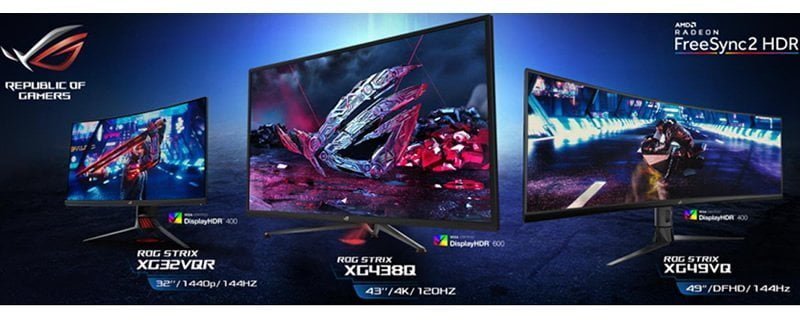Any links to online stores should be assumed to be affiliates. The company or PR agency provides all or most review samples. They have no control over my content, and I provide my honest opinion.
While Big Format Gaming Displays (BGFD) sound amazing they will be
Asus may have a great alternative with the ROG Strix XG438Q which is a a 43-inch DisplayHDR 600 screen which offers 90% coverage of the DCI-P3 colour space and support for local dimming and 120Hz refresh rates.
In a world of 27-inch monitors, you may think 43-inch is ridiculous but if you have a

ASUS ROG Big
AMD FreeSync support may not sound that appealing for many, but NVIDIA just announced that they will now support Adaptive Sync in some monitors. It is highly likely that this monitor will be one of the one certified for the new G-Sync requirements.
It is believed that the VU type panel and offer respectable levels of HDR support with 10-bit image processing, 600 nits of peak luminance, local dimming and both FreeSync 2 HDR and VESA

There is no launch date but it is expected in Q2 this year. There is no price information either.
Support for Adaptive Sync on Nvidia Geforce graphics cards will be added on January 15th, and in the
I am James, a UK-based tech enthusiast and the Editor and Owner of Mighty Gadget, which I’ve proudly run since 2007. Passionate about all things technology, my expertise spans from computers and networking to mobile, wearables, and smart home devices.
As a fitness fanatic who loves running and cycling, I also have a keen interest in fitness-related technology, and I take every opportunity to cover this niche on my blog. My diverse interests allow me to bring a unique perspective to tech blogging, merging lifestyle, fitness, and the latest tech trends.
In my academic pursuits, I earned a BSc in Information Systems Design from UCLAN, before advancing my learning with a Master’s Degree in Computing. This advanced study also included Cisco CCNA accreditation, further demonstrating my commitment to understanding and staying ahead of the technology curve.
I’m proud to share that Vuelio has consistently ranked Mighty Gadget as one of the top technology blogs in the UK. With my dedication to technology and drive to share my insights, I aim to continue providing my readers with engaging and informative content.







